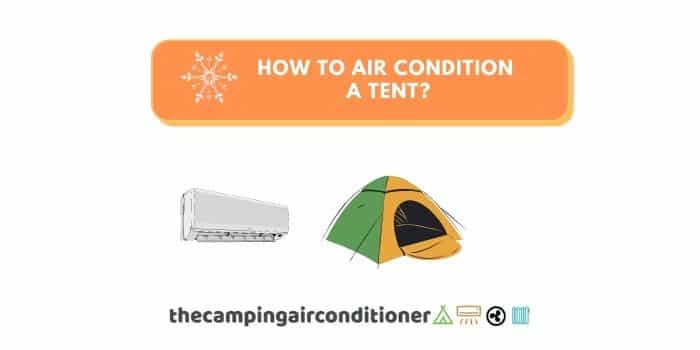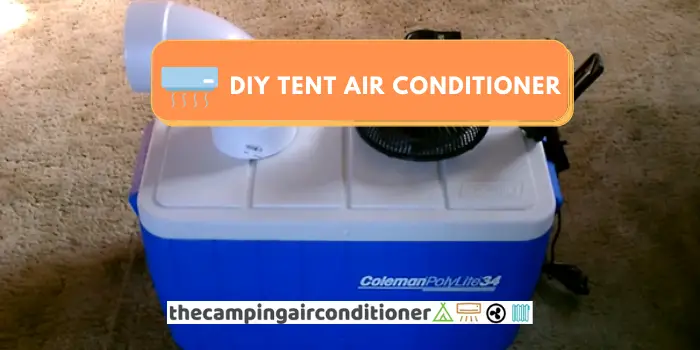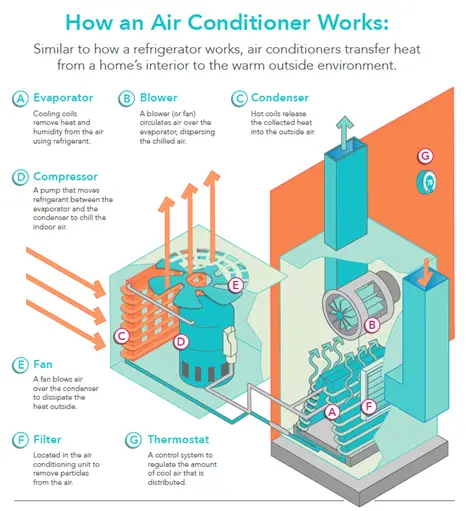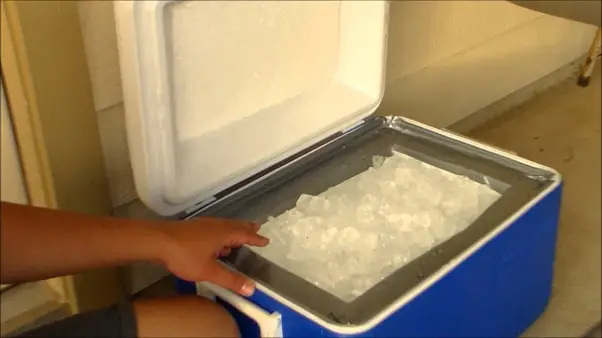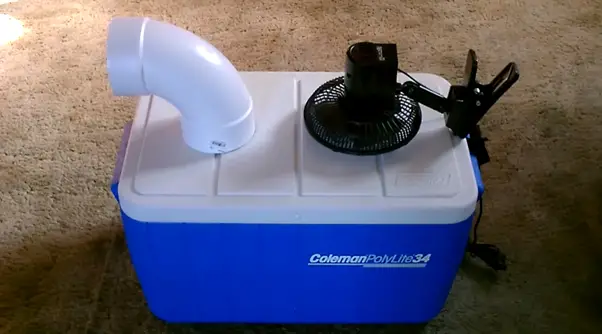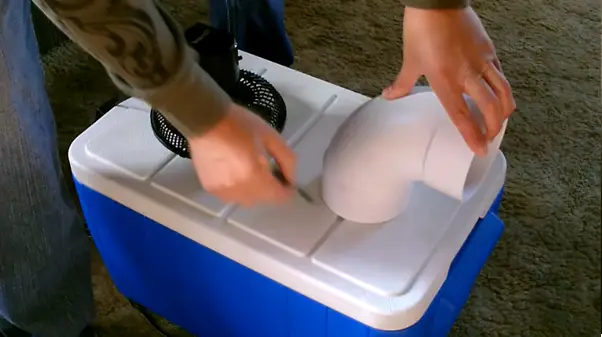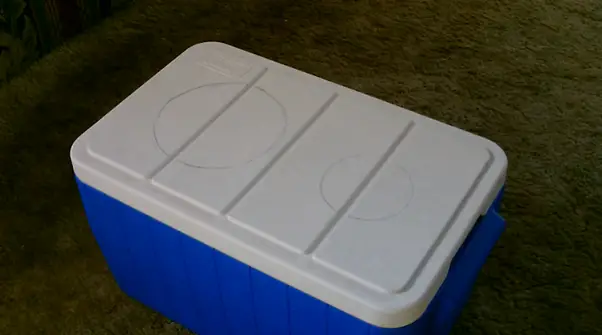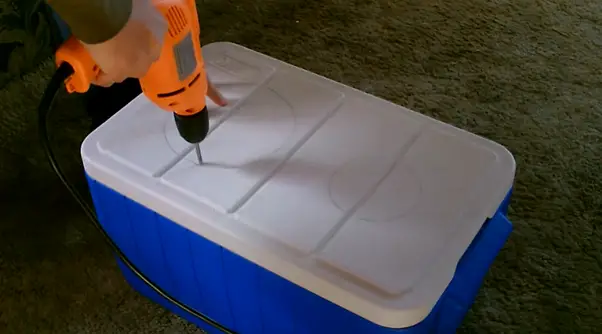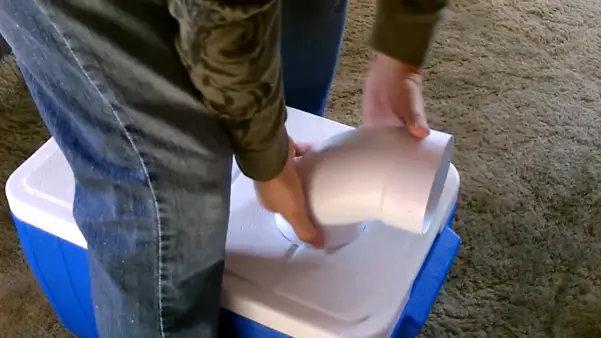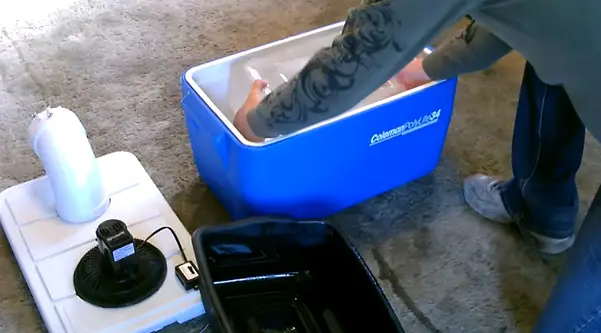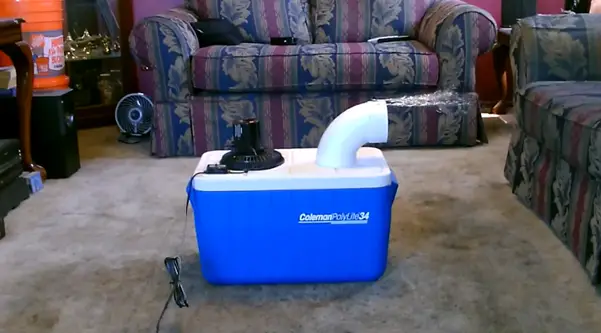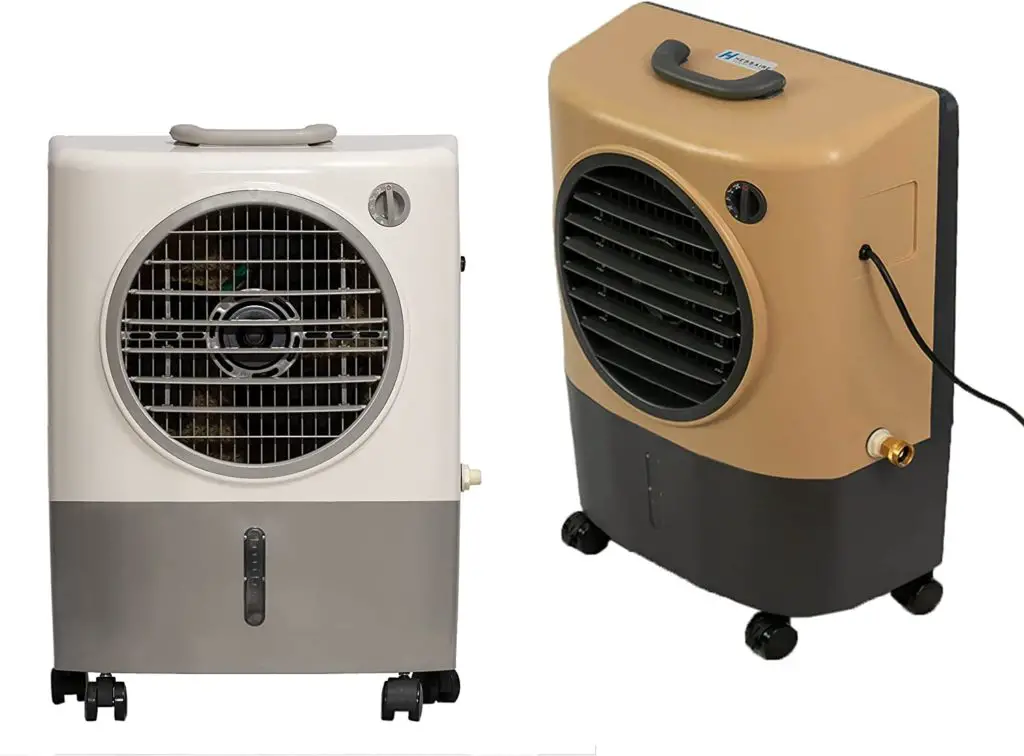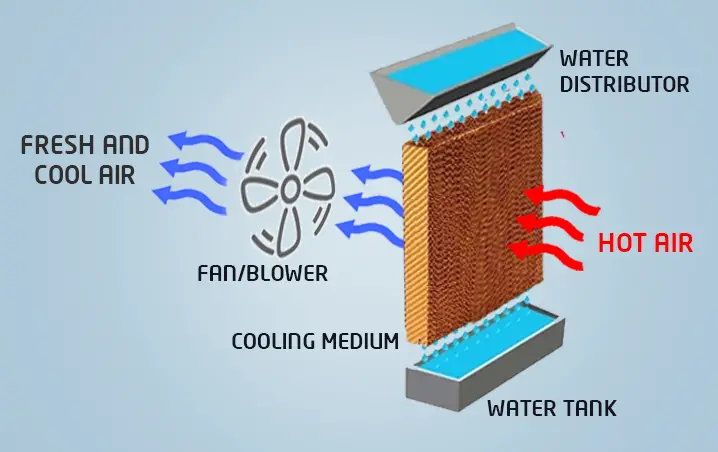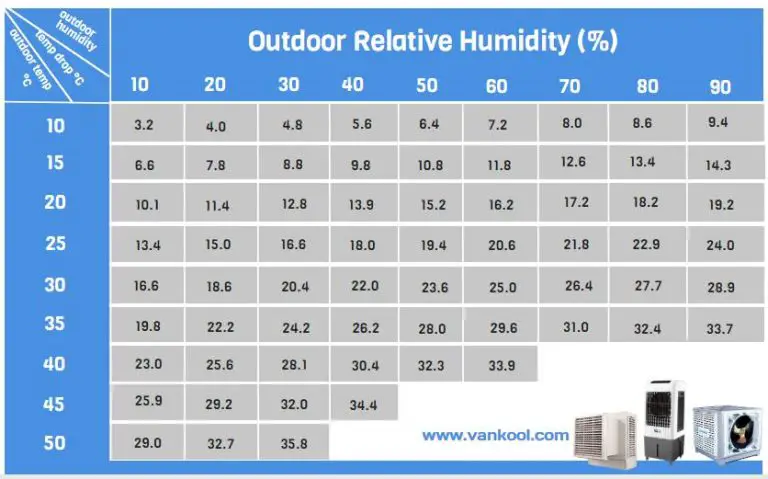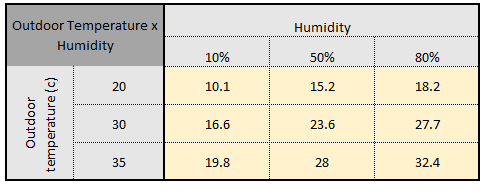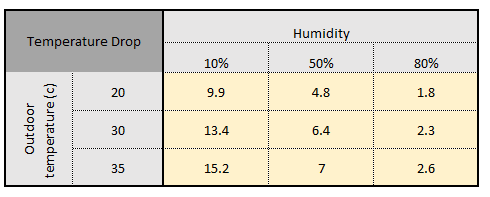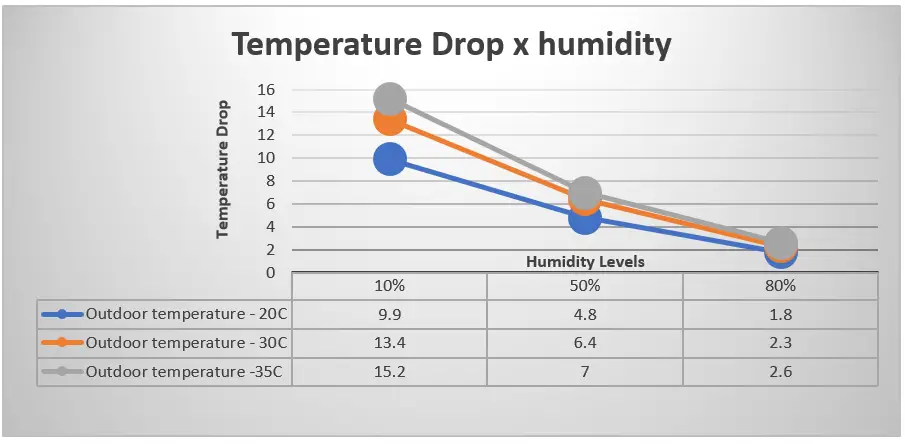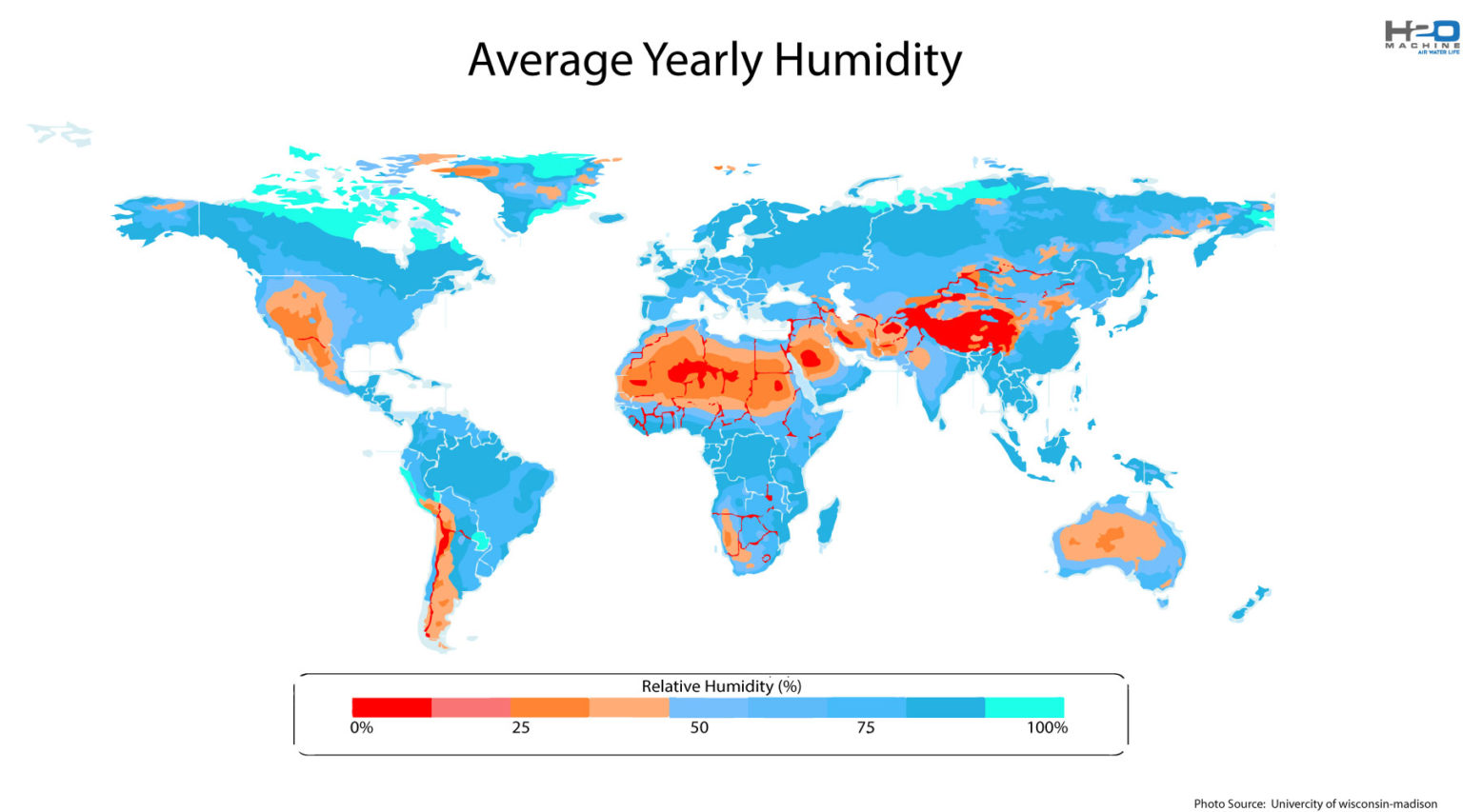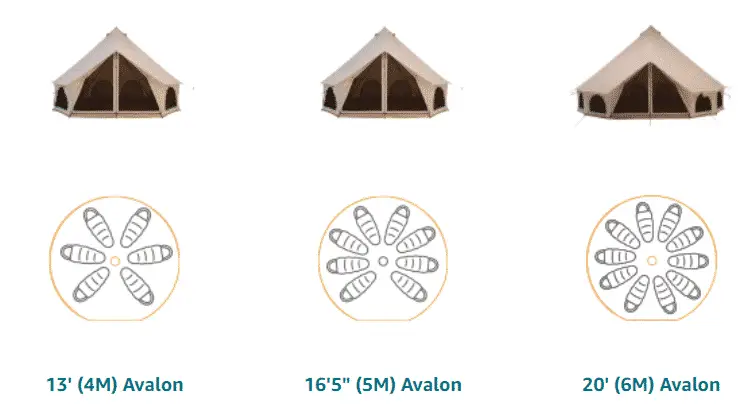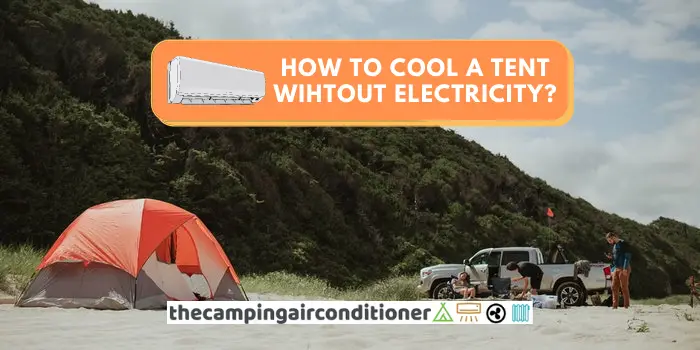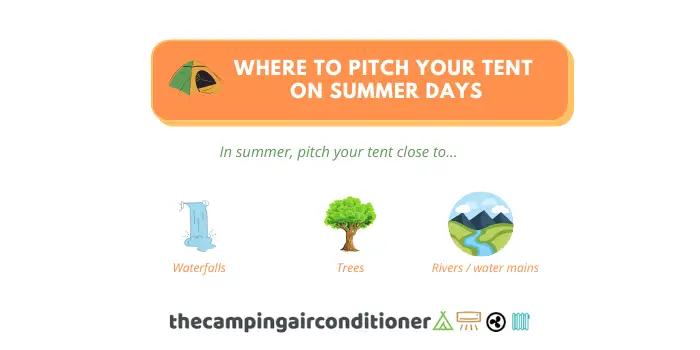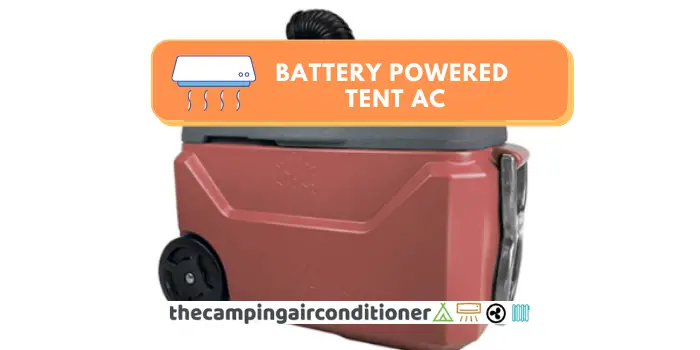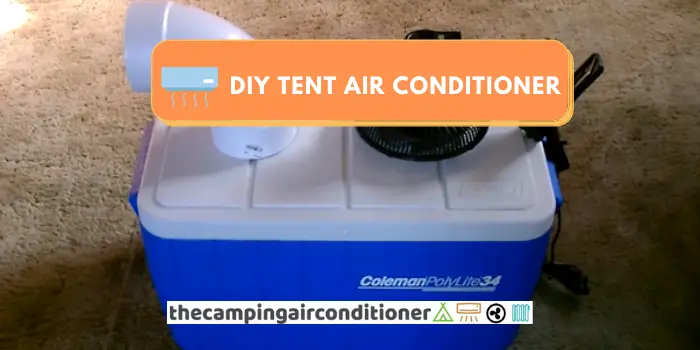Solar Powered Camping Fans – Budget-Friendly options!
While camping can be a great outdoor activity, it can become a hassle during the summer – It is hard to enjoy camping when it is extremely hot. One solution for cooling down your tent has a solar-powered fan.
They are great for camping in the summer since they can be easily recharged and offer an eco-friendly approach. ith so many products in the market, it cannot be easy to pick out the best. Luckily, we have made the work easy for you – these are the best solar powered camping fan options in the market these days:
- Option 1 – Best USB Compatible – Solar Fan 5W 4 Inch Solar Powered Fan
- Option 2 – Best Heavy-Duty – Ansee Solar Camping Fan
- Option 3 – Best Multi-functional option – BusyPiggy Solar Camping Fan
- Option 4 – Best option with misting line (ideal for dry areas) – ExtremeMist 14″ Misting Fan
- Option 5 – Best option for mid-to-large tents – Cowin Solar Fan Sytem
Best USB Compatible – Solar Fan 5W 4 Inch Solar Powered Fan
Best Heavy-Duty – Ansee Solar Camping Fan
Best Multi-functional option – BusyPiggy Solar Camping Fan
Best option with misting line (ideal for dry areas) – ExtremeMist 14″ Misting Fan – OUR CHOICE!
Best option for mid-to-large tents – Cowin Solar Fan Sytem
All of them are smaller and weigh less to pack than tent air conditioners for any outdoor adventure. Below is our in-depth review of each product.
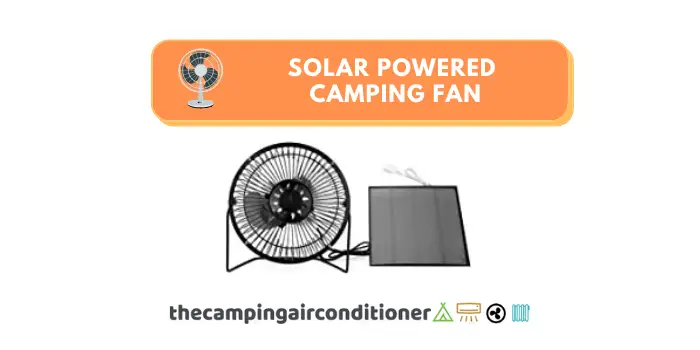
Best Solar Powered Camping Fans
Solar Fan 5W 4 Inch Solar Powered Fan
This solar-powered fan (Solar Fan 5W 4 Inch Solar Powered Fan) one of the best gear for camping. The package comes with a solar fan and a charger that keeps it charged to supply you with continuous energy.
It is constructed with a waterproof design that allows you to leave it outside without worrying about rain or splashes. Besides, this solar-powered fan is ideal for office, RV campers, touring, tree house, dog house, and many more.
The fan runs fast under direct sunlight, and it works slowly or stops working when the sunlight is weak. If you want to cool your tent at night without noise disturbance, this fan will do the job while operating quietly.
In addition, the solar-powered camping fan is lightweight and compact to allow you to carry it anywhere.
Pros
- It has a powerful and quiet-operating fan
- User-friendly and safe to use
- It can be used indoors and outdoors using the USB port
- The construction is waterproof and durable
Cons
- This solar panel’s power output is highly affected by weather conditions.
Ansee Solar Camping Fan
Ansee brings you this heavy-duty fan powered by eco-friendly solar energy. The camping fan has a heavy-duty ABS plastic construction that makes the fan durable and reliable even in harsh outdoor conditions. It uses an ultra-quiet motor that allows you to relax in your tent without being disturbed by the noise.
The Ansee solar-powered camping fan is lightweight, and it is simple to carry, thanks to the included handle. Its double charge design makes it charging efficient, and it has a variable speed control switch that allows you to adjust the fan speed as per your needs.
Still, it has an LED lighting angle designed to offer user convenience while at the same time protecting your eyes.
Furthermore, the multifunctional fan comes equipped with utilities that allow you to use it as a fan, a spotlight torch, and an LED table lamp. It is ultra-portable and easy to carry, and it can be used for blackout emergencies, outdoor shade, transportation, and camping.
Depending on the mode you use, it can continuously work from 4 to 8 hours. It takes 3 hours to attain full charge.
Pros
- It is made of a heavy-duty and durable ABS plastic construction
- The fan operates quietly even in the highest setting
- Multipurpose and reliable
- Waterproof and ideal for using both indoor and outdoor
Cons
- This fan tends to overheat
- It takes longer to charge.
BusyPiggy Solar Camping Fan
BusyPiggy is not just a fan but also a multifunctional product. It is an innovative camping gear that includes lighting, fans, charging, and emergency signal lights. This is one of the functional camping fans you can find in the market.
It has three LED light panels with four adjustable brightness levels that can be adjusted according to your cooling needs. Still, you can switch it to red flashing mode for use as an emergency signal light at night.
The solar-powered camping fan has a built-in rechargeable battery that can continuously operate between 5 to 48 hours (depending on the brightness level).
The fan can also work with a USB cable powered by a car charger, laptop, power bank, and many more. It is designed with a USB output port to charge your phone, MP3, GPS, power bank, or iPod. In addition, you can hang this camping fan on the branches, tents, or inside cars, thanks to its built-in hook.
With its compact and lightweight design, you can place it on the desk in the office or at home without needing much space, plus it will be easy to carry around.
Pros
- The camping fan has four lighting speeds and four wind speeds
- Made of high-quality ABS material
- Foldable and easy to store
- It has a powerful and long-lasting battery
Cons
- The patent power switch has a design flaw
- It doesn’t blow enough air to cool large tents or spaces.
ExtremeMist 14" misting fan
ExtremeMist 14″ misting fan is fitted with three mist nozzles and ExtremeMist pump that can be sued to cool large areas in seconds. It has 14″ aluminum blades that blast cool air and cold mist to keep your tent cool when it is warm.
The misting fan has a 5200mAh battery pack with an A/C charger to pre-charge before using it. What’s more, the powerful battery can provide from 5 to 24 hours of continuous power depending on the speed, and it includes power indicator lights that display the battery level.
The misting fan includes a 16 ft. misting line which can be used for other tasks like cooling your golf cart, canopy, outdoor patio, deck, beach umbrella, or anywhere else you need to cool. You only need to remove the pump from the base and plug in the mist line.
In addition, maintaining the fan is simple because its design is simple, and it doesn’t have complicated parts. It is a compact solar-powered fan suitable for camping, BBQs, tailgating, sporting events, and anywhere else you need to charge.
In addition, the fan includes a USB charging port for recharging and charging your smart devices.
Pros
- The misting fan is compact and portable
- It features an energy-efficient 5200mAh battery
- A great option for a wide range of outdoor activities
- It is energy-efficient and operates quietly
Cons
- More expensive than the other options
Cowin Solar Fan System
Cowin Solar Fan system combines power and versatility, being ideal for all campers. Due to its size, we would recommend it for mid-to-large tents. Another cool feature of this equipment is its remote control, allowing you to operate from a distance.
It also comes with an alternating current adapter, which ensures that you can charge its battery on cloudy or rainy days. The battery has 4500mAh, which allows the equipment to operate for up to 12 hours.
Cowin Solar Fan Sytem‘s solar panel measures approximately 6 feet and comes with a 16.4 inch (42cm) cable, which is enough. Regarding power, you can choose from 3 different speeds that range from 1000 rpm to 1350rpm.
It is easy to assemble and disassemble, making it o good option for campers.
Pros
- Comes with remote control
- Runs up to 12 hors
- Good for mid-to-large tents
- Low noise levels when operating
Cons
- There have been some durability complaints from customers
- Its size makes it not ideal for backpackers or hikers
FAQ
How long will the battery of the solar powered camping fan last?
Each model will have different specifications, therefore read carefully equipment instructions and check whether it is suitable for you. Overall, expect devices operating from 4-12 hours.
What are the pros and cons of having a solar powered camping fan?
The pros and cons of solar powered camping fans are detailed below.
Pros
- Solar works in many climates
- Solar is a proven technology
- Affordable options
- Eco-friendly
- Portable devices
- Long lifespan
Cons
- If the device does not have a battery, your equipment will not work in the night
- Not all solar panels are high-quality (be careful)
Are there more powerful camping fan options?
Yes, there are. If you have budget and power supply in you campsite, we recommend you picking a camping evaporative cooler.
Conclusion
Having a solar-powered camping fan is an excellent alternative if you want to cool your tent in the summer. Solar-powered fans are eco-friendly and portable, and they will save you a lot of money.
From our article, we hope you have a perfect solar fan choice. All the fans are suitable for maintaining enough ventilation, especially in the summer and humid areas. You don’t have to worry about your battery draining as long as the sun is out with the solar fan. Overall, our recommendations are: .
- Option 1 – Best USB Compatible – Solar Fan 5W 4 Inch Solar Powered Fan
- Option 2 – Best Heavy-Duty – Ansee Solar Camping Fan
- Option 3 – Best Multi-functional option – BusyPiggy Solar Camping Fan
- Option 4 – Best option with misting line (ideal for dry areas) – ExtremeMist 14″ Misting Fan – OUR CHOICE!
- Option 5 – Best option for mid-to-large tents – Cowin Solar Fan Sytem
Happy summer camping!












